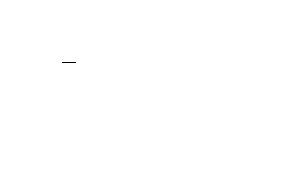


 تاريخ الرياضيات
تاريخ الرياضيات
 الرياضيات في الحضارات المختلفة
الرياضيات في الحضارات المختلفة 
 الرياضيات المتقطعة
الرياضيات المتقطعة
 الجبر
الجبر
 الهندسة
الهندسة 
 المعادلات التفاضلية و التكاملية
المعادلات التفاضلية و التكاملية 
 التحليل
التحليل
 علماء الرياضيات
علماء الرياضيات |
Read More
Date: 19-10-2021
Date: 24-11-2021
Date: 18-11-2021
|
A dragon curve is a recursive nonintersecting curve whose name derives from its resemblance to a certain mythical creature.

The curve can be constructed by representing a left turn by 1 and a right turn by 0. The first-order curve is then denoted 1. For higher order curves, append a 1 to the end, then append the string of preceding digits with its middle digit complemented. For example, the second-order curve is generated as follows:  , and the third as
, and the third as  .
.

Continuing gives 110110011100100... (OEIS A014577), which is sometimes known as the regular paperfolding sequence and written with  s instead of 0s (Allouche and Shallit 2003, p. 155). A recurrence plot of the limiting value of this sequence is illustrated above.
s instead of 0s (Allouche and Shallit 2003, p. 155). A recurrence plot of the limiting value of this sequence is illustrated above.
Representing the sequence of binary digits 1, 110, 1101100, 110110011100100, ... in octal gives 1, 6, 154, 66344, ...(OEIS A003460; Gardner 1978, p. 216).

This procedure is equivalent to drawing a right angle and subsequently replacing each right angle with another smaller right angle (Gardner 1978). In fact, the dragon curve can be written as a Lindenmayer system with initial string "FX", string rewriting rules "X" -> "X+YF+", "Y" -> "-FX-Y", and angle  . The dragon curves of orders 1 to 9 are illustrated above, with corners rounded to emphasize the path taken by the curve.
. The dragon curves of orders 1 to 9 are illustrated above, with corners rounded to emphasize the path taken by the curve.
REFERENCES:
Allouche, J.-P. and Mendès France, M. "Automata and Automatic Sequences." In Beyond Quasicrystals (Ed. F. Axel et al.). Berlin: Springer-Verlag, pp. 293-367, 1994.
Allouche, J.-P. and Shallit, J. "Example 5.1.6 (The Regular Paperfolding Sequence)." Automatic Sequences: Theory, Applications, Generalizations. Cambridge, England: Cambridge University Press, pp. 155-156, 2003.
Bulaevsky, J. "The Dragon Curve or Jurassic Park Fractal." http://ejad.best.vwh.net/java/fractals/jurasic.shtml.
Charpentier, M. "L-Systems in PostScript." http://www.cs.unh.edu/~charpov/Programming/L-systems/.
Dickau, R. M. "Two-Dimensional L-Systems." http://mathforum.org/advanced/robertd/lsys2d.html.
Dixon, R. Mathographics. New York: Dover, pp. 180-181, 1991.
Dubrovsky, V. "Nesting Puzzles, Part I: Moving Oriental Towers." Quantum 6, 53-57 (Jan.) and 49-51 (Feb.), 1996.
Dubrovsky, V. "Nesting Puzzles, Part II: Chinese Rings Produce a Chinese Monster." Quantum 6, 61-65 (Mar.) and 58-59 (Apr.), 1996.
Gardner, M. Mathematical Magic Show: More Puzzles, Games, Diversions, Illusions and Other Mathematical Sleight-of-Mind from Scientific American. New York: Vintage, pp. 207-209 and 215-220, 1978.
Lauwerier, H. Fractals: Endlessly Repeated Geometric Figures. Princeton, NJ: Princeton University Press, pp. 48-53, 1991.
Mandelbrot, B. B. The Fractal Geometry of Nature. New York: W. H. Freeman, pp. 66-67, 1983.
Peitgen, H.-O. and Saupe, D. (Eds.). The Science of Fractal Images. New York: Springer-Verlag, p. 284, 1988.
Sloane, N. J. A. Sequences A003460/M4300 and A014577 in "The On-Line Encyclopedia of Integer Sequences."
Vasilyev, N. and Gutenmacher, V. "Dragon Curves." Quantum 6, 5-10, 1995.
Wells, D. The Penguin Dictionary of Curious and Interesting Geometry. London: Penguin, p. 59, 1991.



|
|
|
|
4 أسباب تجعلك تضيف الزنجبيل إلى طعامك.. تعرف عليها
|
|
|
|
|
|
|
أكبر محطة للطاقة الكهرومائية في بريطانيا تستعد للانطلاق
|
|
|
|
|
|
|
العتبة العباسية المقدسة تبحث مع العتبة الحسينية المقدسة التنسيق المشترك لإقامة حفل تخرج طلبة الجامعات
|
|
|